Have you ever been fascinated by the mysterious symbols of ancient Egypt, known as hieroglyphics? These intricate and captivating symbols were more than just a form of writing; they carried a deep mythological significance as well. In this article, we will explore the rich world of mythological symbols in hieroglyphics and unravel the hidden meanings behind them. From sacred animals to powerful gods and goddesses, these symbols offer a glimpse into the beliefs and rituals of ancient Egyptians. Join us on this journey as we decipher the secrets of hieroglyphics and delve into the fascinating world of myth and symbolism in ancient Egypt.
What are Hieroglyphics?
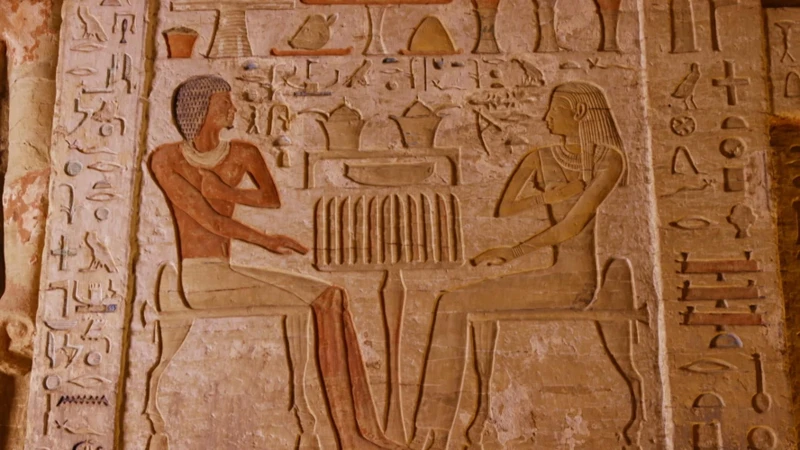
Hieroglyphics were a system of writing used by the ancient Egyptians. The word “hieroglyphics” itself is derived from two Greek words: “hieros,” meaning sacred, and “glyphein,” meaning to carve. This ancient writing system involved a combination of pictorial symbols, phonetic signs, and determinatives, which helped convey meaning and context. The symbols were typically carved or painted on various surfaces, such as temple walls, tombs, papyrus scrolls, and even jewelry. Hieroglyphics were not solely used for communication purposes but also held a significant religious and mythological significance. They were a means to record important events, document religious rituals and beliefs, and express the power and divine nature of the pharaohs. The complexity of hieroglyphics made them a distinctive and revered form of communication in ancient Egypt. Although the decipherment of hieroglyphics was a long and challenging process, it eventually led to a greater understanding of the rich cultural and mythological heritage of ancient Egypt.
The Significance of Mythological Symbols
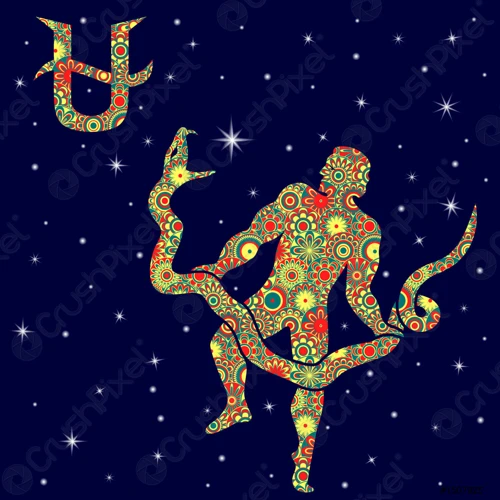
The mythological symbols found in hieroglyphics held immense significance in ancient Egyptian culture. These symbols were not only a form of written language but also served as powerful representations of their religious beliefs, deities, and the natural world. Each symbol had a deeper meaning attached to it, conveying concepts such as fertility, protection, divinity, and the afterlife. The use of mythological symbols in hieroglyphics allowed the ancient Egyptians to express their devotion to the gods and their understanding of the world around them. For example, birds like the falcon were associated with the god Horus, who represented protection and kingship. Animals such as the lion symbolized power and royalty, while gods like Isis and Osiris embodied the ideals of motherhood and resurrection, making them prominent symbols. Additionally, elements of nature such as the sun, moon, and stars were considered divine and were prominently featured in hieroglyphics. The significance of these mythological symbols in hieroglyphics was intertwined with the religious and spiritual beliefs of the ancient Egyptians, offering a glimpse into their complex cosmology and mythology. To explore more about Egyptian mythology, you can read our article on the fascinating concept of Ma’at – the goddess of truth and justice.
Common Mythological Symbols in Hieroglyphics
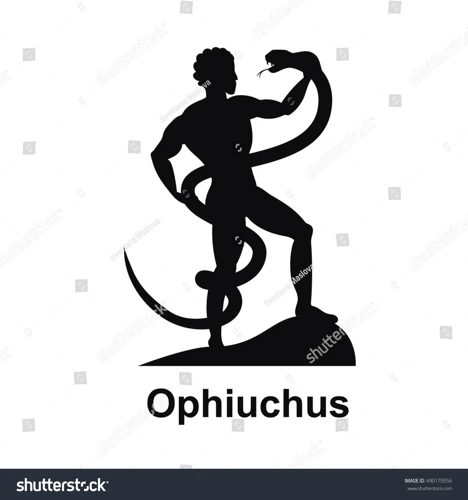
Common mythological symbols in hieroglyphics encompass a wide range of elements from the natural and supernatural world. Birds hold great significance in ancient Egyptian mythology, representing various deities such as Horus, the falcon-headed god of the sky, or Thoth, the ibis-headed god of wisdom and writing. Animals like the lion, representing power and leadership, or the jackal, associated with Anubis, the god of mummification and the afterlife, also appear frequently in hieroglyphics. Gods and goddesses themselves are often portrayed through various symbols; for instance, Ra, the sun god, is depicted with a sun disk on his head. Natural elements, like the Nile River, are represented by wavy lines, while the symbol of the ankh signifies life and eternity. Hieroglyphics offer a fascinating glimpse into the mythological beliefs and cultural practices of ancient Egypt, allowing us to explore their rich and enchanting world.
Birds
Birds held great significance in ancient Egyptian mythology, and their representation in hieroglyphics was no exception. There were various bird symbols that conveyed different meanings. One of the most prominent bird symbols was the falcon, specifically the god Horus, who was often depicted with the head of a falcon. The falcon symbolized divine kingship and protection. Another bird commonly represented in hieroglyphics was the ibis, associated with Thoth, the god of wisdom and writing. The ibis was revered for its association with learning and knowledge. The vulture, represented by the goddess Nekhbet, was associated with protection and maternal care.
Birds also played a significant role in Egyptian beliefs about the afterlife. The ba, a part of the individual’s soul, was often depicted as a human-headed bird flying out of the deceased person’s tomb. The ba was believed to traverse the sky and join the gods in the afterlife. Birds were closely associated with the concept of the soul’s journey to the heavens.
In addition to their mythological and spiritual connotations, birds were also admired for their natural attributes, such as their ability to soar high in the sky. The graceful and majestic flight of birds symbolized freedom, transcendence, and the connection between the earthly and divine realms. Birds were a source of inspiration for ancient Egyptians and their presence in hieroglyphics added a layer of symbolism and reverence to their written language.
To learn more about the fascinating beliefs of ancient Egyptians regarding the afterlife, you can explore our article on the journey to the underworld.
Animals
In hieroglyphics, animals played a significant role and were often used as symbols to represent various concepts and deities. Each animal held its own unique symbolism and represented different aspects of Egyptian mythology.
One commonly seen animal in hieroglyphics is the scarab beetle. The scarab was associated with the god Khepri, who represented the rising sun and rebirth. The image of a scarab beetle pushing a ball of dung symbolized the sun’s journey across the sky and the cycle of life and death. The scarab beetle was also believed to have protective qualities and was often used as an amulet or charm.
Another important animal symbol in hieroglyphics is the lion. The lion was associated with the powerful goddess Sekhmet, who represented war and destruction. Lions were revered as symbols of strength and valor, and their image was often used to depict royalty and kingship.
The ibis bird was another significant animal symbol in hieroglyphics. This bird was associated with the god Thoth, who was the god of wisdom and writing. The ibis bird was often shown with a crescent-shaped moon on its head, representing Thoth’s connection to the moon and lunar cycles.
The hawk, specifically the falcon, was a symbol of the god Horus, the divine sky god and protector of the pharaohs. The hawk was associated with keen vision and was believed to embody the sun’s power.
Other animals commonly depicted in hieroglyphics include the jackal (representing the god Anubis, who presided over the afterlife and mummification), the cobra (symbolizing royalty and protection, often associated with the goddess Wadjet), and the crocodile (representing the god Sobek, associated with fertility and protective powers).
The extensive use of animal symbols in hieroglyphics not only added visual appeal but also conveyed deeper meanings and connections to Egyptian mythology and religious beliefs. Each animal had its own symbolism and significance, contributing to the complex tapestry of hieroglyphic communication.
Gods and Goddesses
In hieroglyphics, gods and goddesses were frequently depicted using various symbols, each carrying its own unique meaning. These symbols served as visual representations of the divine beings worshipped by the ancient Egyptians. For example, the pharaoh Akhenaten introduced the symbol of the sun disk with rays known as the “Aten” to signify the god Aten’s importance in his new monotheistic religion. Another well-known symbol is the ankh, which represents the concept of eternal life and is often associated with the goddess Isis. Renowned gods such as Ra, the sun god, were depicted with a solar disk atop a falcon’s head, symbolizing divine power and protection. The goddess Hathor, associated with love and music, was represented by a cow or a woman with cow ears, emphasizing her nurturing and maternal qualities. The lioness-headed goddess Sekhmet, known as the bringer of divine retribution, was depicted with the head of a lioness, showing her ferocity and power. These symbols played a crucial role in visually conveying the attributes and characteristics of the gods and goddesses in hieroglyphics. To learn more about the symbolism in Egyptian mythology, you can explore the intriguing enigma of the Sphinx and its significance in ancient Egyptian culture by following this link.
Natural Elements
Natural elements played a significant role in the mythological symbols found in hieroglyphics. These symbols represented various aspects of nature, such as animals, plants, and celestial bodies, often with symbolic meanings attached to them.
1. Animals: Ancient Egyptians deeply revered animals and believed that they possessed unique qualities and connections to the divine. Hieroglyphic symbols of animals depicted their characteristics and spiritual significance. For example, the lion symbolized power and royalty, while the ibis represented wisdom and knowledge. The scarab beetle was associated with rebirth and transformation, linking it to the concept of resurrection.
2. Plants: Hieroglyphics also featured symbols of plants, particularly those with medicinal or mystical properties. The lotus flower, a common motif, represented rebirth, purity, and the sun. The papyrus plant, a vital resource in ancient Egypt, symbolized fertility, growth, and the written word.
3. Celestial Bodies: The ancient Egyptians had a deep fascination with the sky and celestial bodies, which they believed influenced their lives. Hieroglyphic symbols related to the sun, moon, and stars depicted their astronomical significance. The sun symbol, known as the “sun disk” or “Aten,” represented solar deities and the concept of divinity. The moon symbolized the god Thoth, who was associated with writing, knowledge, and time.
These natural elements and their symbolic representations in hieroglyphics provided the ancient Egyptians with a way to express their spiritual beliefs, invoke protective forces, and depict the harmonious connection between the physical and divine realms.
Decoding the Meanings

Decoding the meanings of hieroglyphics is like unraveling a cryptic puzzle. Each symbol carries its own significance and can have multiple meanings depending on context. To understand hieroglyphics, Egyptologists and linguists have relied on various methods, including the study of ancient texts, known as the Rosetta Stone, and the analysis of recurring symbols and patterns.
One essential aspect of decoding hieroglyphics is understanding that the symbols can represent both objects and ideas. For example, the hieroglyphic symbol of a bird could represent the actual bird species or convey the concept of “flight” or “freedom.”
Egyptologists have categorized hieroglyphics into different classes, such as phonetic signs, determinatives, and ideograms. Phonetic signs represent sounds and can be used to write names, foreign words, or loanwords. Determinatives are symbols placed at the end of words to provide context and indicate their meaning. Ideograms, on the other hand, represent complete ideas or concepts.
Additionally, hieroglyphics can be read from left to right, right to left, or top to bottom, adding another layer of complexity to their interpretation. The same symbol can also be read differently based on its orientation.
The decipherment of hieroglyphics has allowed researchers to gain insights into the daily lives, religious beliefs, and mythological narratives of ancient Egyptians. It is an ongoing process with new discoveries and translations being made all the time. The symbolic nature of hieroglyphics continues to captivate scholars and enthusiasts alike, providing a window into the rich and fascinating world of ancient Egypt.
Religious and Ritualistic Symbolism
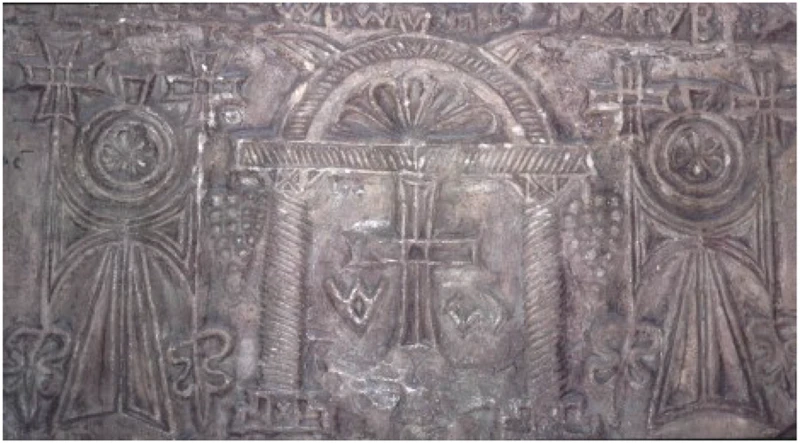
Religious and ritualistic symbolism played a central role in ancient Egyptian hieroglyphics. The temples and shrines, which were places of worship and connection with the gods, were often represented in hieroglyphic texts. These sacred structures were depicted with great detail, showing their architectural features, such as pylons, columns, and courtyards. Additionally, offerings and sacrifices made to the gods were frequently represented in hieroglyphics. These offerings, which included food, drink, and incense, were shown as a symbol of reverence and devotion. The hieroglyphic texts also depicted priests and priestesses performing rituals and ceremonies, emphasizing the significant role they played in ancient Egyptian religious practices. The intricate symbolism within hieroglyphics allows us to gain a deeper understanding of their religious beliefs and rituals and provides glimpses into the spiritual world of ancient Egyptians.
Temples and Shrines
Temples and shrines played a crucial role in ancient Egyptian religious and ritualistic practices. These sacred structures were not only places of worship but also served as centers for various ceremonies and offerings. Hieroglyphics were prominently used in the decoration and inscriptions found within these architectural marvels, carrying profound symbolic meanings. One common symbol associated with temples and shrines was the depiction of the sun disk, often represented with falcon wings. This symbol, known as the “uraeus,” was a representation of the sun god Ra and symbolized his divine protection. Another significant symbol found in the hieroglyphics of temples and shrines was the “ankh,” also known as the key of life. This symbol, resembling a cross with a loop at the top, represented eternal life and was often associated with rituals and offerings performed within these sacred spaces. It is fascinating to witness how hieroglyphics were utilized to convey the sacred nature of these religious sites and the beliefs and practices associated with them.
Offerings and Sacrifices
Offerings and sacrifices played a significant role in ancient Egyptian religious and ritualistic practices. The hieroglyphic symbols associated with these acts provide insights into the beliefs and customs of the ancient Egyptians. One common symbol related to offerings is the “bread loaf” hieroglyph, represented by a rectangle with diagonal lines at the top. This symbolizes a staple food item that was offered to the gods as sustenance. Another symbol is the “jar” hieroglyph, depicted as a vessel with a long neck. This represents various liquids and substances such as oils, wine, and water that were offered during rituals. The “burnt incense” hieroglyph resembling a cone-shaped incense burner symbolizes the offering of aromatic substances, which were believed to please the gods and carry prayers and wishes to the divine realm. The “animal” hieroglyphs, such as a calf or a goose, were associated with sacrificial offerings. Animals were often ritually slaughtered and presented as offerings to honor the gods. Additionally, the “knife” hieroglyph represents the tool used in the ritualistic act of sacrifice, emphasizing the sacred nature of the offering. These symbols of offerings and sacrifices in hieroglyphics give us a glimpse into the religious practices and beliefs of the ancient Egyptians, highlighting their deep reverence for the divine and their desire to establish a connection with the gods through these rituals.
Symbolic Representation of Pharaohs and Royalty
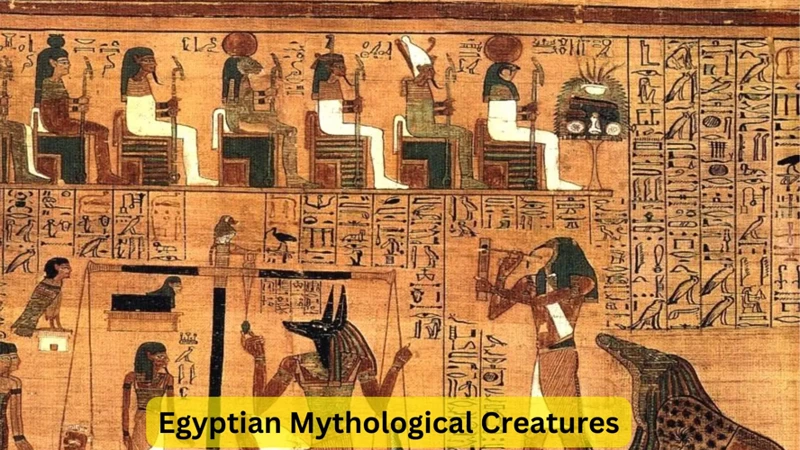
Symbolic representation of pharaohs and royalty was a prominent theme in hieroglyphics. These symbols were used to convey the supreme authority, power, and divine status of the rulers. One of the most common symbols associated with pharaohs was the royal crown, also known as the nemes headdress. This striped headcloth with an upright cobra at the front symbolized the pharaoh’s royal lineage and protection. Another symbol often depicted in hieroglyphics was the throne, representing the pharaoh’s seat of power and authority. The crook and flail, two ceremonial symbols carried by pharaohs, were also frequently portrayed as symbols of leadership and rule. Additionally, hieroglyphics showcased scepters, which reflected the pharaoh’s role as a ruler and mediator between the human world and the gods. These symbols of royalty in hieroglyphics emphasized the divinity and importance of the pharaohs in ancient Egyptian society.
Royal Crowns
Royal crowns held great symbolic significance in ancient Egyptian society. They were not merely decorative headpieces but represented the status, power, and divinity of the pharaohs. There were different types of royal crowns, each with its own unique design and symbolism.
1. Hedjet Crown: Also known as the White Crown, the Hedjet was associated with Upper Egypt. It was depicted as a tall, conical-shaped crown with a slight curve at the top. The color white represented purity and the crown symbolized the pharaoh’s rule over Upper Egypt.
2. Deshret Crown: The Deshret Crown, also called the Red Crown, symbolized Lower Egypt. It was depicted as a low, flat-topped crown with a distinct red color, representing the red desert and the fertile red soil of the region. The Deshret Crown signified the pharaoh’s dominion over Lower Egypt.
3. Khepresh Crown: The Khepresh Crown was a blue war crown worn by the pharaoh during military campaigns. Its distinct feature was the cobra emblem at the front, signifying the pharaoh’s power and protection. The Khepresh Crown symbolized the pharaoh’s role as the ultimate warrior and defender of Egypt.
4. Nemes Headcloth: The Nemes Headcloth was not technically a crown, but it was a significant symbol worn by the pharaoh. It was a striped, blue and gold cloth that covered the head and fell down the back of the neck. The Nemes Headcloth represented the pharaoh’s royal authority and divinity.
Each royal crown carried a deep mythological meaning and reflected the geographical and political divisions of ancient Egypt. The choice of crown depended on the pharaoh’s connection to specific regions and gods. These crowns were not just fashion statements but powerful symbols of the pharaoh’s divine right to rule and their connection to the gods themselves.
Thrones and Scepters
Thrones and scepters were prominent symbols of power and authority in ancient Egyptian society, and their representation in hieroglyphics held great significance. The depiction of thrones in hieroglyphics often featured an ornate chair with intricate carvings and symbols. These chairs were associated with the pharaoh and represented their position as the ruler of Egypt. The presence of a throne symbol in hieroglyphics conveyed the idea of kingship and sovereignty.
Similarly, scepters were another important symbol of authority. They were typically depicted as long staffs or rods held by gods, goddesses, and the pharaoh. The scepter symbolized the pharaoh’s divine power and their ability to govern and lead. It represented their role as a mediator between the gods and the mortal realm. The hieroglyphic representation of a scepter often featured a long staff with various symbols or animal heads at the top, further emphasizing its symbolic significance.
These symbols of thrones and scepters in hieroglyphics not only highlighted the divine status of the pharaoh but also conveyed the idea of stability, order, and legitimacy of their rule. They were a powerful visual representation of the pharaoh’s authority and their connection to the gods. The careful inclusion of these symbols in hieroglyphic texts aimed to reinforce and perpetuate the pharaoh’s divine right to rule.
Astronomical Symbols and Astrology
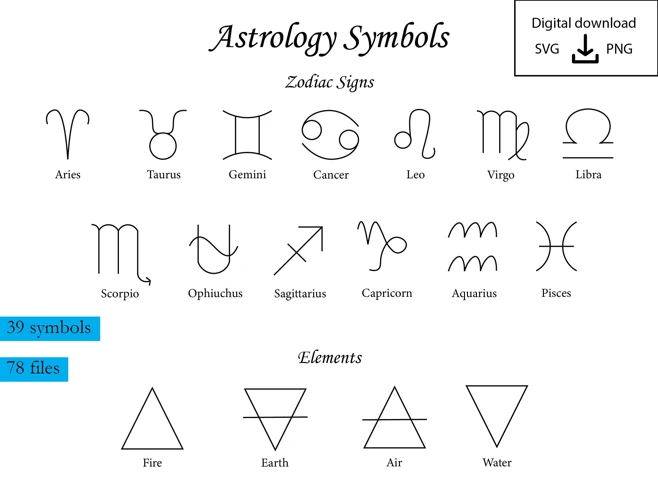
Astronomy played a crucial role in ancient Egyptian culture, and this is reflected in the hieroglyphic symbols associated with celestial bodies and astrology. The sun held immense importance and was symbolized by the hieroglyphic sign of a circle with a dot in the center. It represented both the physical sun and the sun god, Ra, who was considered a powerful deity. The moon, which was associated with the goddess Isis, was represented by the crescent shape. In addition to the sun and moon, the ancient Egyptians also recognized and revered the stars. The concept of astrology was intertwined with their beliefs, as they believed that the movements and positions of celestial bodies influenced human fate and fortunes. Zodiac signs were depicted in hieroglyphics, with each sign symbolizing specific qualities and characteristics. The celestial symbolism in hieroglyphics provides a fascinating insight into how the ancient Egyptians perceived and revered the cosmos, intertwining it with their daily lives and beliefs.
Sun and Moon
The sun and moon were highly revered symbols in ancient Egyptian culture and held great significance in hieroglyphics. The sun, represented by the symbol ☉, was associated with the god Ra, the primary deity of the sun, creation, and order. The sun was believed to be the life-giving force and the source of light and warmth. It was often depicted as a disc with rays emanating from it. The moon, represented by the symbol ☽, was associated with the god Thoth, the god of wisdom, writing, and the moon itself. The moon was seen as a symbol of fertility, time, and the divine feminine. It was often depicted as a crescent shape or a full disc. These symbols of the sun and moon were commonly used in hieroglyphics to represent the gods they were associated with. They were also used to denote time, as the movement of the sun and moon played a crucial role in the ancient Egyptians’ calendar and religious rituals. Both the sun and moon were seen as divine entities that influenced daily life, the agricultural cycle, and the journey of the soul in the afterlife. Their representations in hieroglyphics served as a reminder of their power and importance in ancient Egyptian mythology and culture.
Zodiac Signs
Zodiac signs played a significant role in ancient Egyptian astrology and are one of the fascinating mythological symbols found in hieroglyphics. The Egyptians believed that each individual was influenced by the position of celestial bodies at the time of their birth. This belief led to the development of a zodiac system consisting of twelve signs, each associated with a specific deity and corresponding time period. Some of the well-known zodiac signs in ancient Egypt include Amon-Ra (represented by the ram), Bastet (represented by the cat), and Horus (represented by the falcon). These symbols were used to determine an individual’s personality traits, fate, and compatibility with others. In hieroglyphics, these zodiac signs were depicted alongside other symbols, creating a rich tapestry of meaning and insight. The representation of zodiac signs in hieroglyphics allows us to understand the significance of astrology in ancient Egyptian culture and their belief in the influence of celestial forces on human lives. It reveals their fascination with the cosmos and their desire to align themselves with the divine powers that governed the universe. Exploring the hieroglyphic depictions of zodiac signs provides us with a glimpse into the intricate astrological beliefs of this ancient civilization.
Connection to the Afterlife
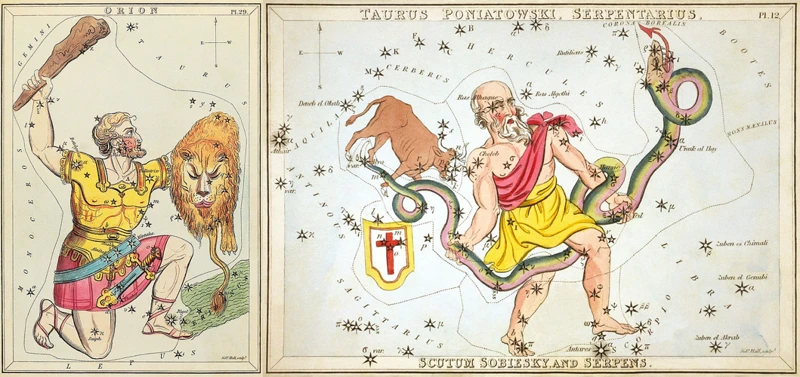
The connection between hieroglyphics and the afterlife was deeply intertwined in ancient Egyptian beliefs. One prominent symbol associated with the afterlife was the Ankh, an ancient hieroglyphic symbol resembling a looped cross. The Ankh represented the key to eternal life and was often depicted in the hands of gods and goddesses, as well as pharaohs. It symbolized the continuation of life beyond death and was believed to grant the deceased a prosperous journey in the afterlife. Hieroglyphics also played a crucial role in funerary rituals and the preservation of the deceased. Inscriptions on tomb walls and funerary objects provided instructions and prayers to guide the soul in its journey to the afterlife. The Book of the Dead, a collection of texts written on papyrus, contained numerous hieroglyphics that depicted spells, offerings, and protective measures for the deceased. These hieroglyphic inscriptions served as a bridge between the earthly realm and the realm of the afterlife, ensuring the continuity and well-being of the departed souls. Explore more about the fascinating journey to the underworld in ancient Egyptian beliefs here.
Ankh
The Ankh is one of the most recognizable and ancient symbols in Egyptian hieroglyphics. Also known as the symbol of life, the Ankh resembles a cross with a loop at the top. It is believed to represent eternal life and immortality. The loop at the top of the Ankh is often interpreted as the sun rising over the horizon, while the vertical line symbolizes the path of the sun. The Ankh was frequently depicted being held by gods and goddesses, symbolizing their power to grant life and protect mortals. It was also commonly associated with fertility and was often shown being offered to individuals as a blessing. The Ankh was utilized in a variety of contexts, such as funerary art, temple inscriptions, and personal amulets. Its symbolism extended beyond religious purposes, as it was also associated with prosperity, health, and happiness. The Ankh serves as a powerful reminder of the ancient Egyptian belief in the continuity of life and the importance of spiritual well-being.
Mummies and Funerary Objects
Mummies and funerary objects played a significant role in ancient Egyptian culture and were often symbolized in hieroglyphics. The process of mummification, the preservation of the body after death, was seen as essential for achieving immortality in the afterlife. In hieroglyphics, mummies were often depicted with their arms crossed over their chest, wearing a mask representing the deceased’s face. These symbols conveyed the belief in the preservation of the body and the journey to the afterlife. Canopic jars, used to store the organs of the deceased, were also symbolically represented in hieroglyphics. Each jar had a different animal head lid, representing the four sons of the god Horus: Imsety, Hapi, Duamutef, and Qebehsenuef. These hieroglyphic representations of mummies and funerary objects served as a reminder of the importance of proper burial and preservation of the body for the afterlife. By honoring these traditions, ancient Egyptians believed they would ensure their eternal existence in the realm beyond.
Artistic and Architectural Symbolism

Artistic and architectural symbolism played a significant role in ancient Egyptian culture. From the grand pyramids to the intricate tomb paintings, every artistic and architectural element held a deeper meaning. The pyramids, such as the Great Pyramid of Giza, symbolized the eternal resting place of pharaohs and their journey to the afterlife. These colossal structures were not only tombs but also represented the pharaoh’s power and divine connection. Tomb paintings depicted scenes of daily life, religious rituals, and the afterlife. The use of specific colors, such as blue for the sky and green for fertility, added symbolic value to the artwork. Obelisks and columns were not only architectural marvels but also represented stability and protection. These structures, often adorned with hieroglyphics, served as a visual reminder of the pharaoh’s authority and the gods’ presence. The artistic and architectural symbolism in ancient Egypt reflected the religious beliefs and the importance placed on the afterlife, creating a lasting legacy that still captivates us today.
Pyramids and Tombs
Under the topic of Pyramids and Tombs, hieroglyphics played a crucial role in depicting the grandeur and significance of these monumental structures. Pyramids, such as the iconic Great Pyramid of Giza, were not only tombs for pharaohs but also served as powerful symbols of the pharaohs’ divine authority and eternal life. Hieroglyphics found inside and outside the pyramids conveyed a range of meanings associated with life, death, and the afterlife.
The inscriptions and carvings on pyramid walls often depicted scenes from the pharaoh’s journey into the afterlife. These hieroglyphics narrated the rituals, offerings, and prayers that were performed to assist the pharaoh’s soul in successfully transitioning into the realm of the gods. Symbolic representations of gods, such as Osiris, the god of the afterlife, and Anubis, the god of embalming, were commonly found in pyramid hieroglyphics.
Hieroglyphic texts inside pyramids also provided important information about the pharaoh’s lineage, accomplishments, and royal genealogy. These inscriptions were designed to ensure the pharaoh’s eternal legacy and divine status. Additionally, hieroglyphics on the outside of pyramids served as protective spells and warnings against any desecration or intrusion.
The significance of tombs was not limited to pyramids alone, as many nobles and wealthy individuals also had elaborate tombs adorned with hieroglyphic inscriptions. These tombs were filled with intricate artwork and symbolic representations of the deceased’s journey to the afterlife. Hieroglyphics within these tombs often depicted scenes of the individual’s life, family, and even their professions or accomplishments.
The rich symbolism and detailed hieroglyphics found in pyramids and tombs give us a glimpse into the belief system and rituals surrounding death and the afterlife in ancient Egypt. They provide a lasting testament to the importance of hieroglyphics in preserving the memory and spiritual journey of the pharaohs and elite individuals of ancient Egypt.
Obelisks and Columns
Obelisks and columns hold significant artistic and symbolic value in ancient Egyptian culture. Obelisks, tall and slender four-sided monuments, were considered sacred structures and were often placed in pairs at temple entrances or as solitary monuments. They were made from a single block of granite or sandstone and carved with hieroglyphics, depicting the pharaoh’s accomplishments and divine connections. These obelisks were seen as conduits between the earthly realm and the realm of the gods. They were believed to harness and channel the power of the sun god Ra, and their towering presence served as a reminder of both the pharaoh’s authority and the gods’ watchful eye.
On the other hand, columns, which were typically found in temple complexes, had their own symbolism in ancient Egypt. They were often decorated with intricate hieroglyphic inscriptions and reliefs, depicting scenes from religious ceremonies and mythological tales. Columns were not only structural elements but also representations of the ancient Egyptian’s understanding of the natural world and their cosmology. The shape of the columns mimicked the papyrus and lotus plants, which held religious significance in Egyptian mythology. The papyrus represented Lower Egypt, while the lotus symbolized Upper Egypt, and the columns served as a metaphorical unification of the two regions. Columns were also believed to support the weight of the heavens, representing harmony between the earthly and divine realms.
Obelisks and columns in ancient Egypt were more than just architectural elements; they carried powerful symbolism and deep religious meaning. Whether it was the soaring obelisks channeling the divine power of the sun or the intricately decorated columns representing the unity of the Egyptian lands, these structures stood as monumental testaments to the ancient Egyptian’s reverence for their gods, their pharaohs, and their mythological beliefs.
Mystical and Protective Symbols
Mystical and protective symbols played a significant role in ancient Egyptian culture, and many of these symbols can be found in hieroglyphics. One such symbol is the Eye of Horus, known as the “Wedjat” symbol. Depicted as a right eye with distinct markings, the Eye of Horus was associated with healing, protection, and royal power. It was believed to bring good health and ward off evil spirits, making it a popular symbol in amulets and jewelry. Another important protective symbol is the representation of animal deities, such as the lion-headed goddess Sekhmet or the falcon-headed god Horus. These animal deities were believed to possess powerful qualities and were often invoked for protection in various aspects of life. The inclusion of these mystical and protective symbols in hieroglyphics served as a means to convey not only their literal meanings but also the beliefs and values of ancient Egyptians.
Eyes of Horus
The Eyes of Horus, also known as the Eye of Ra, were powerful and mystical symbols in ancient Egyptian mythology. These symbols represented the eyes of the falcon-headed god Horus, who was associated with protection, royal power, and divine vision. The Eye of Horus was a symbol of healing, restoration, and the all-seeing power of the gods. It was believed to bring good health, prosperity, and spiritual protection to those who wore or displayed it. The Eye of Horus was often depicted as a stylized eye, with the markings resembling the feathered wings of a falcon. The right eye represented the sun, while the left eye represented the moon. Interestingly, the Eye of Horus was also associated with mathematical calculations and fractions, with the different parts of the eye representing specific fractions. This further emphasized the connection between the divine eye and knowledge. The Eyes of Horus were commonly used in amulets, jewelry, and architectural decorations, serving as a symbol of divine protection and guidance in ancient Egyptian culture. Today, the Eye of Horus continues to be a popular and recognized symbol, representing wisdom, intuition, and divine sight.
Animal Deities
Animal deities held a significant place in ancient Egyptian mythology and were often depicted in hieroglyphics. These animal deities were considered to possess magical and symbolic powers, representing various aspects of nature and the divine. Here are a few notable animal deities and their meanings:
Horus: Horus was one of the most important deities in ancient Egypt, often depicted as a falcon or a falcon-headed man. He symbolized the sky, leadership, and protection. Horus was associated with the pharaohs, believed to be their divine protector.
Anubis: Anubis, portrayed as a jackal-headed deity, was the god of mummification and the afterlife. He played a crucial role in guiding the souls of the deceased to the underworld and judging their hearts during the weighing of the heart ceremony.
Bastet: Bastet, represented as a lioness or a domestic cat, was the goddess of home, fertility, and protection. Bastet was a symbol of grace, nurturing, and feminine power.
Sekhmet: Sekhmet, depicted as a lioness, was associated with war, destruction, and healing. She represented the fierce and protective aspect of the sun god, Ra.
Thoth: Thoth, often represented as an ibis or a baboon, was the god of writing, wisdom, and lunar cycles. He was considered the scribe of the gods and played a significant role in maintaining balance and order in the world.
These animal deities were not only revered and worshipped but also featured prominently in various mythological tales and religious ceremonies. They symbolized different aspects of life, nature, and the divine, connecting ancient Egyptians with the spiritual realm. Through hieroglyphics, these animal deities were immortalized, allowing their stories and symbolism to be passed down through generations.
Conclusion
In conclusion, the study of mythological symbols in hieroglyphics reveals the deep spiritual and cultural beliefs of ancient Egypt. Hieroglyphics served not only as a form of writing but also as a means to convey complex mythological narratives, religious rituals, and social hierarchies. From the depiction of gods and goddesses to the representation of the afterlife and the significance of architectural structures, hieroglyphics provided a visual language that connected the ancient Egyptians with their gods and ancestors. The decipherment of hieroglyphics has allowed us to unlock the mysteries of this ancient civilization and gain valuable insights into their mythological beliefs and symbolism. The exploration of these fascinating symbols in hieroglyphics continues to captivate and intrigue scholars and enthusiasts alike, offering a window into the rich and vibrant world of ancient Egyptian mythology.
Frequently Asked Questions
What is the oldest known hieroglyphic inscription?
The oldest known hieroglyphic inscription is the Narmer Palette, believed to date back to around 3100 BCE. It depicts the pharaoh Narmer and showcases the early development of hieroglyphic writing.
How did hieroglyphics get deciphered?
Hieroglyphics were deciphered thanks to the groundbreaking work of French scholar Jean-François Champollion in the early 19th century. He compared the hieroglyphic texts with the Greek translation found on the Rosetta Stone, which allowed him to uncover the phonetic values of hieroglyphic signs.
Did everyone in ancient Egypt know how to read and write hieroglyphics?
No, not everyone in ancient Egypt knew how to read and write hieroglyphics. Literacy in hieroglyphics was mainly limited to scribes, priests, and members of the elite class. It was a specialized skill that required years of training and education.
Were hieroglyphics only used for religious texts?
No, hieroglyphics were not only used for religious texts. While a significant portion of hieroglyphic inscriptions were of religious nature, they were also used for administrative records, historical accounts, literature, and personal correspondence.
Are hieroglyphics still used today?
No, hieroglyphics are not used as a form of writing today. After the decline of the ancient Egyptian civilization, the use of hieroglyphics gradually diminished, and the knowledge of their meaning was lost until their decipherment in modern times.
Can hieroglyphics be found outside of Egypt?
Yes, hieroglyphics can be found outside of Egypt. As the ancient Egyptians traded and had cultural exchanges with neighboring civilizations, inscriptions and artifacts with hieroglyphics have been discovered in various other regions, such as Sudan and the Levant.
How many hieroglyphic signs are there?
There are over 700 hieroglyphic signs in the Egyptian writing system. These signs can represent anything from objects and creatures to abstract concepts and sounds.
What materials were used to write hieroglyphics?
Hieroglyphics were written using various materials, depending on the surface. For monumental inscriptions, like those on temple walls, stone or stucco was commonly used. On papyrus, a type of paper made from the papyrus plant, hieroglyphics were either painted or written using reed brushes and ink.
Were hieroglyphics only written from right to left?
No, hieroglyphics could be written in different directions, depending on the context. They could be written from right to left, left to right, or even top to bottom. The direction of the hieroglyphics often followed the direction in which the human or animal figures were facing.
Do hieroglyphics have punctuation marks?
No, hieroglyphics do not have punctuation marks like the ones used in modern languages. Instead, they relied on placement and context to determine pauses, breaks, or implied punctuation.








